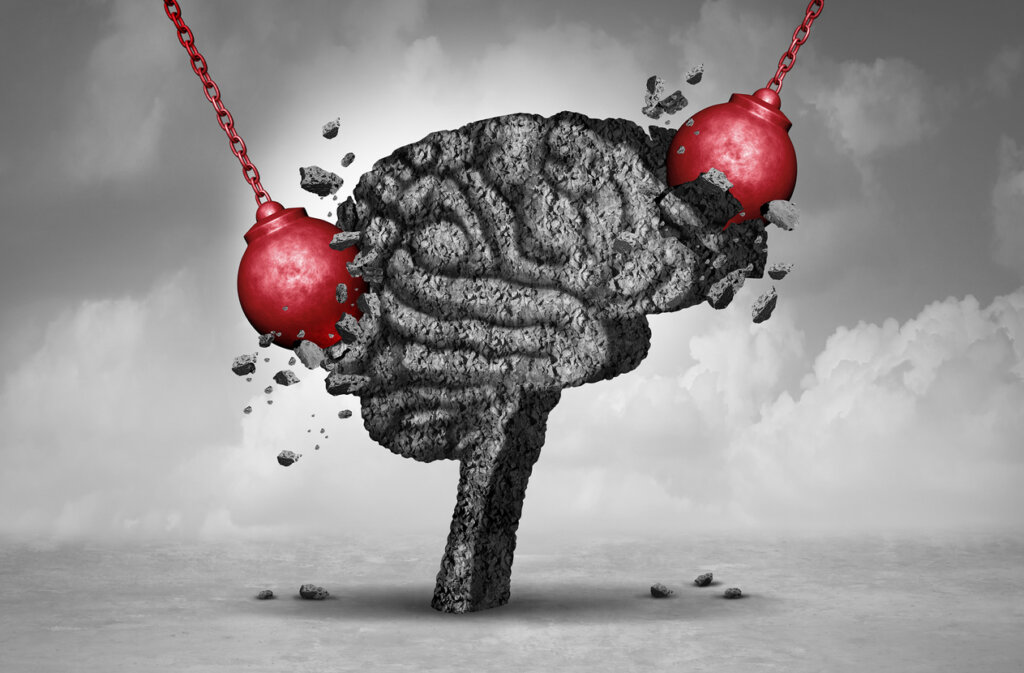The Links Between Trauma and Addiction


Written and verified by the psychologist Cristina Roda Rivera
The connection between trauma and addiction is widely documented in scientific literature. Furthermore, in clinical practice, practitioners repeatedly encounter patients with both addiction and a history of trauma. The problem for psychologists is in knowing if this connection should be approached as a unitary problem or not.
When it comes to treating addiction, if the trauma that caused it isn’t treated at the same time, the approach may be insufficient. Therefore, the sufferer becomes both the victim and their own executioner.
In this article, we’ll talk about the strong connection between trauma and addiction. We’ll try to explain the strong neurobiological alteration that traumas cause in the stress circuit, especially if there’s repeated trauma. As a matter of fact, addiction frequently appears as the only way out to regulate this altered system.
An altered neurobiological system in coping with stress
The stress system is largely governed by the hypothalamic-pituitary-adrenal (HPA) axis. This prepares us to respond effectively to a signal of danger. When a stressor is identified, the HPA axis (along with other systems) prepares us for ‘fight or flight’ by triggering the secretion of stress hormones such as adrenaline and glucocorticoids.
When the stress response is activated, we tend to experience hyperarousal, increased blood pressure, rapid heart rate, and a sense of alarm. Blood and energy are diverted to those brain structures that can offer us immediate assistance. That’s as opposed to activating the slower prefrontal cortex, which controls executive functioning and self-regulation. These automatic responses help us respond to danger until the threat is resolved.
However, there are times when our stress system works against us. Typically, these are situations where the traumatic events are persistent and the threat is never resolved.
Traumatic episodes can exacerbate the dysregulation of this stress system. More specifically, the HPA axis is chronically activated, leading to increased stress hormones and accompanying hyperarousal.
Therefore, children or adults who’ve endured traumatic events, especially on an ongoing basis, may experience ongoing arousal, anxiety, hypervigilance, and alertness.

Trauma and addiction: self-medication as a way to regulate pain
For people with dysregulated stress systems as a result of trauma, drugs of abuse can offer relief from chronic hyperarousal and anxiety. For instance, alcohol, benzodiazepines, opiates, and cannabis all have calming and intoxicating effects.
Some of these substances even serve to slow down the central nervous system. That’s because they’re depressants. For example, gambling (especially electronic gaming machines) puts players into a kind of trance in which they forget about everything other than the machine.
People with a history of trauma may be more vulnerable to addiction as a means of regulating their mood, calming intrusive thoughts, and suppressing arousal caused by increased stress hormones.
The problem is that these substances and their effects wear off. When this happens, the mood drops sharply. This can worsen the effects of traumatic disorders. Thus, a person finds they have to repeatedly use the drugs to keep experiencing the positive mind-altering effects. This is where the cycle of addiction often begins.
Are we just referring to substance addiction?
Dependence manifests itself in any behavior in which the person finds temporary pleasure or relief and intensely desires the activity or substance, totally or partially ignoring other spheres of life. They suffer from the negative consequences, but despite this fact, can’t stop.
This can include drugs, alcohol, and substances of all kinds. It can also relate to sex, gambling, shopping, work, online gaming, etc. In fact, virtually all activities can become addictive, depending on our relationship with them. As long as there’s constant desire and relief, with long-term negative consequences and difficulty in stopping them, an addiction exists.
Substance abuse as a risk factor for trauma
Trauma doesn’t always initiate the cycle of addiction. As a matter of fact, sometimes, substance abuse can lead to trauma. For instance, we know that drug use can lead to a host of risky behaviors. These include unprotected sex, physical violence, and driving under the influence of alcohol.
Often, these risky behaviors are followed by adverse or traumatic outcomes. For example, unwanted pregnancies, serious injuries, and car accidents, to name a few. For many, these traumatic events can lead to long-term emotional consequences caused by the trauma. All of this can result in further substance abuse.

Trauma and addiction intervention
Occasionally, long periods of ‘self-healing’ with medication and alcohol successfully blunt the memory of the trauma. In these cases, the only apparent problem is substance abuse and addiction.
A person who’s stifled or ignored traumatic experiences may go to great lengths to stay sober. However, other addictive behaviors tend to appear in their place and, in the long run, replace drugs and alcohol. These can involve any compulsion-driven activity.
Managing prior traumatic events can’t be carried out when drug and alcohol abuse is still occurring. For this reason, it’s always recommended to initially start working with behavior modification techniques to eradicate any drug use and alcoholism.
When the trauma survivor is more grounded in the present, they can start working with a psychologist to address their trauma. As a matter of fact, explicit treatment modalities have been created for people enduring long-term shocks after early or relatively frequent trauma.
For this reason, trauma and substance abuse treatment typically go hand-in-hand. There are two therapies focused on this joint mission. These are trauma-informed addiction intervention and trauma-informed care.
All cited sources were thoroughly reviewed by our team to ensure their quality, reliability, currency, and validity. The bibliography of this article was considered reliable and of academic or scientific accuracy.
- De Bellis, M. D., & Zisk, A. (2014). The biological effects of childhood trauma. Child and Adolescent Psychiatric Clinics of North America, 23, 185-222.
- Deykin, E. Y., and Buka, S. L. (1997). Prevalence and risk factors for posttraumatic stressdisorder among chemically dependent adolescents. Am J Psychiatry, 154(6), 752-7.
- Duval, Fabrice, González, Félix, & Rabia, Hassen. (2010). Neurobiología del estrés. Revista chilena de neuro-psiquiatría, 48(4), 307-318. https://dx.doi.org/10.4067/S0717-92272010000500006
- Pérez Sales, P. Reconceptualizar la psicología del trauma desde los recursos positivos: unavisión alternativa. XIX Congreso Virtual Internacional de Psiquiatría.
- Saladin, M. E., Drobes, D. J., Coffey, S. F., Dansky, B. S., Brady, K. T., and Kilpatrick, D. G.(2003). PTSD symptom severity as a predictor of cue-elicited drug craving in victims of violent crime. Addict Behav, 28(9), 1611-29
This text is provided for informational purposes only and does not replace consultation with a professional. If in doubt, consult your specialist.








